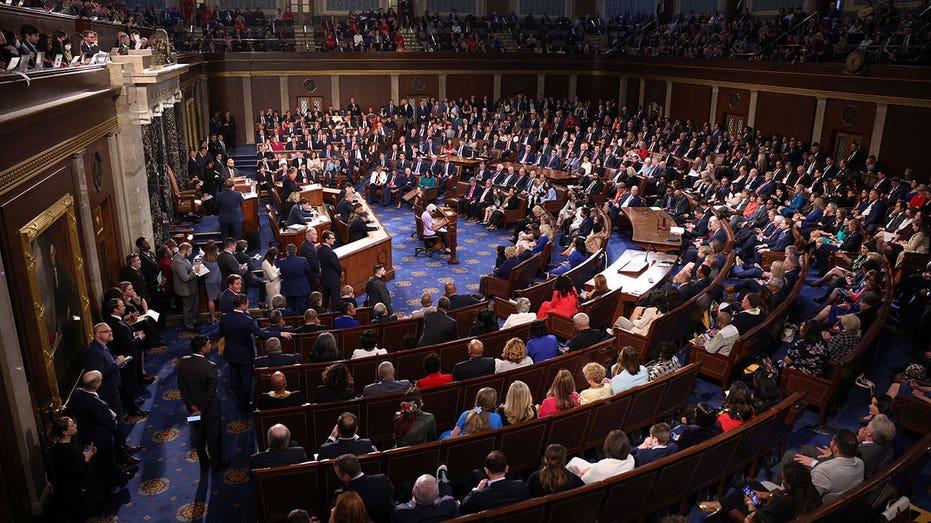6,628. That’s the number of earmarks bipartisan House and Senate lawmakers tucked into the $467 billion minibus spending bill which just passed last week. The funding plan covers six areas of federal spending – averting a partial government shutdown through Sept. 30.
Earmarks totaled $12.7 billion of that spending package, a little less than 3%.
Is this pork barrel spending? Government waste? Or are lawmakers simply doing the nation’s business – in the public interest?
Earmark defenders argue that Congress is simply adhering to the Constitution.
Article I, Section 9 of the Constitution states that “No Money shall be drawn from the Treasury, but in Consequence of Appropriations made by Law.”
Now to be clear, not all congressional appropriations are earmarks. But all earmarks are part of appropriations bills. That’s why earmarks are in the eye of the beholder.
Let’s start by establishing a definition for a congressional earmark: It’s a specific amount of money for a specific project at a specific place.
MEMBERSHIP HAS ITS PRIVILEGES FOR DISGRACED EX-REP GEORGE SANTOS
Earmarks got a bad name in the mid-2000s. There were multiple ethics investigations in the House. And there was a federal corruption probe into the late Rep. Don Young, R-Alaska, and the late Sen. Ted Stevens, R-Alaska. The feds convicted Stevens on corruption charges related to accepting improper gifts. A court later reversed Stevens’ conviction. Investigators also looked at Young – but never charged him.
Young faced criticism for the mother-of-all-earmarks: the so-called “Bridge to Nowhere.” At the time, Young chaired the House Transportation Committee. He tacked on an earmark requiring that the government spend $175 million to connect Gravina Island and Ketchikan, Alaska. The bridge was intended to replace an auto ferry. After much consternation – and a nationwide controversy – lawmakers stripped the earmark.
That’s what prompted Republicans – and then Democrats – to impose a ban on earmarks. Former President Obama even warned that he would not sign any bill which included earmarks.
So, there was a moratorium on such set-aside programs. But Democrats ended the freeze in 2021. Republicans then enthusiastically joined.
And so earmarks are back in full force.
About $1 million for a coffee shop and greenhouse for refugees in Minnesota. Another million bucks designated for organic dairy farmers in San Francisco. And $3.5 million for a new headquarters where they build floats for the annual Thanksgiving Day parade in Detroit.
“These earmarks are like cocaine,” said Sen. Josh Hawley, R-Mo. “I mean, it’s like spending crack. It’s just got to stop.”
Sen. Roger Marshall, R-Kan., argued that lawmakers should be ashamed of authoring earmarks.
“I think if senators had to go to the floor and defend some of these (earmarks) they do, they might then think they wouldn’t have offered them,” said Marshall.
But many lawmakers who earmark are proud to earmark.
Senate Majority Whip Dick Durbin, D-Ill., is one such lawmaker.
“Everything from infrastructure to criminal violence abatement,” said Durbin. “All I insist on is full disclosure of everything.”
Rep. Jack Bergman, R-Mich., is also willing to earmark.
“What we look for is community projects. That’s going to update sewer systems. Wastewater systems. Bridges. Things that involve safety and quality of life for our citizens,” said Bergman. “Not some pork barrel project.”
For his efforts, Bergman scored multiple earmarks in the minibus bill.
The city of Ironwood, Michigan, in the Upper Peninsula, notched $481,000 for new emergency and rescue equipment. And there was $770,000 to expand classrooms at the Traverse City, Michigan, YMCA.
But lots of earmarks are still contentious.
Sens. Bob Casey, D-Pa., and John Fetterman, D-Pa., and Rep. Brendan Boyle, D-Pa., initially requested a $1,000,000 allotment for a LBGTQ community center – which is also known to host events focusing on kink.
Sen. Rand Paul, R-Ky., railed against that particular earmark.
“Government taxation and spending must be for the general welfare of the people,” said Paul. “It’s not for a sex club in Philadelphia.”
Paul applauded when Keystone State lawmakers withdrew the earmark because of the optics.
“That was a confusion within my office. I wasn’t part of that,” said Fetterman.
The senator defended the right for people to engage in those activities. Just not on the public dime.
“To me, it’s about freedom and adults. And I don’t know why that’s really controversial,” said Fetterman.
GOP COLORADO REP KEN BUCK TO RESIGN FROM CONGRESS BY END OF NEXT WEEK
Sen. Mike Lee, R-Utah, opposes earmarks. He offered amendments to remove earmarks, but without any success.
“I was told by the chairman of the Appropriations Committee, ‘Sorry, no can do,’” said Lee.
The Utah Republican then found it rich that lawmakers later struck money for the controversial community center in Philadelphia.
“They were embarrassed to defend that. So [Senate Appropriations Committee Chairwoman Patty Murray, D-Wash.,] went to the floor and had that removed.”
And some earmarks even outlast the members who authored them. Even a dead or former lawmaker can score an earmark. Even 112 earmarks. Such was the case with late Sen. Dianne Feinstein, D-Calif. Feinstein passed away late last September, one day before Congress was supposed to have spending measures approved for this fiscal year. But here we are in mid-March still wrestling with appropriations. So earmarks live on. Feinstein submitted those requests last year – sometimes alongside Sen. Alex Padilla, D-Calif., or Reps. Salud Carbajal, D-Calif., or Jim Costa, R-Calif. This isn’t a new phenomena.
Among Feinstein’s earmark requests: money for a Chinese railroad worker history center and a fire truck for a county in northern California.
But Feinstein isn’t the only one. Former Reps. Brian Higgins, D-N.Y., and Bill Johnson, R-Ohio, resigned from Congress earlier this year. Both received earmarks – even though they left. For instance, Higgins marshaled money for a radio project with the Niagara Country, New York, Sheriff’s Department and for wind tests at the State University of New York-Amherst. Johnson also received money for sewer and water projects in Youngstown and Steubenville, Ohio.
CLICK HERE TO GET THE FOX NEWS APP
The minibus spending bill covered six of the 12 individual appropriations bills for fiscal year 2024. But that measure only handled one-third of all “discretionary” federal spending. The remainder comes in another, massive six-bill tranche due at the end of next week. That accounts for two-thirds of all “discretionary” spending.
So guess how many earmarks might wind up in that one.





